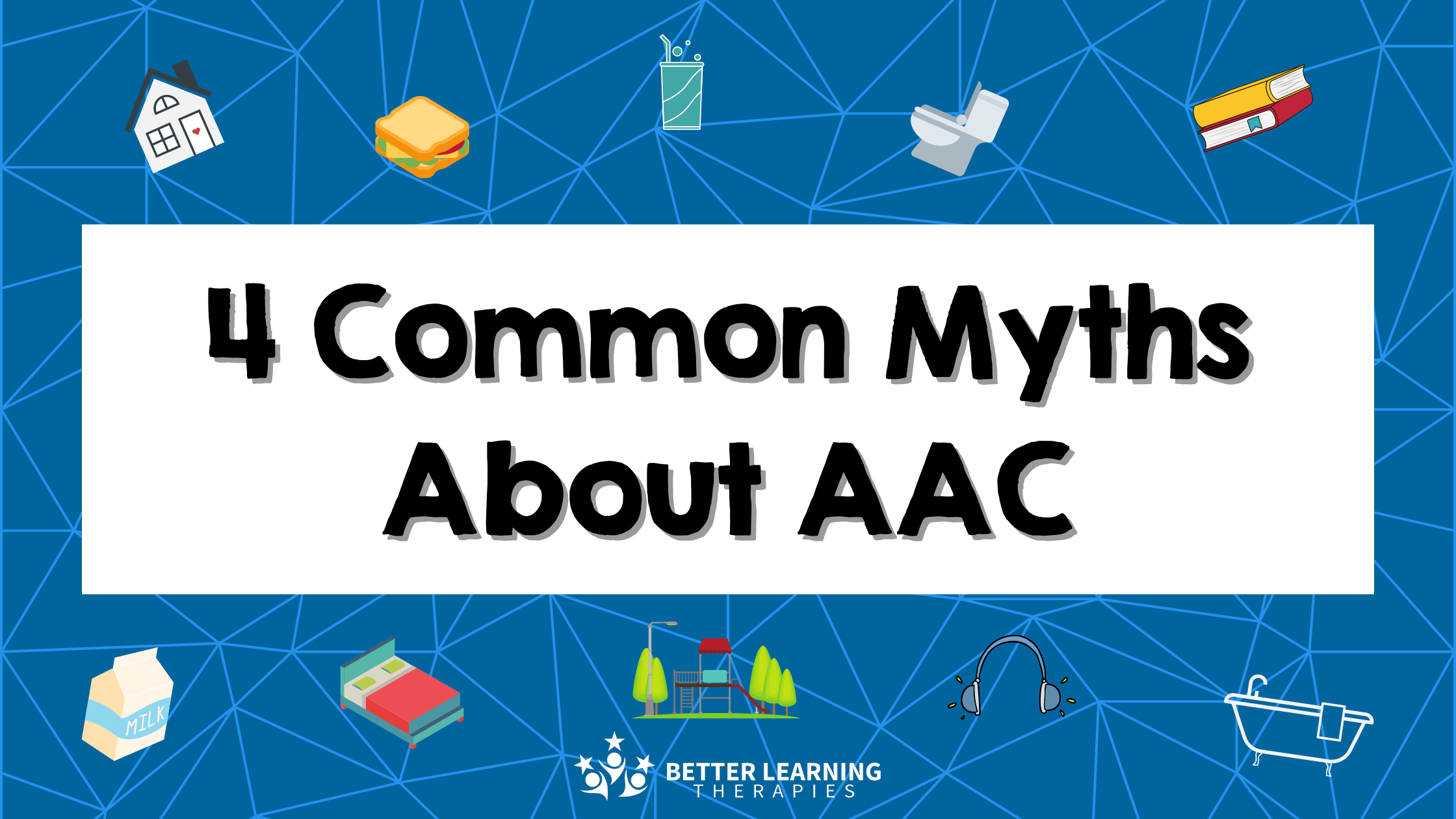Four Common Myths About AAC
By Heather Amann, MS, CCC-SLP and Michelle Wilde
What Is AAC?
AAC is the common acronym for Augmentative and Alternative Communication. “AAC means all of the ways that someone communicates besides talking. People of all ages can use AAC if they have trouble with speech or language skills. Augmentative means to add to someone’s speech. Alternative means to be used instead of speech.” (Augmentative and Alternative Communication (AAC))
These augmentative and alternative methods can include:
Gestures
Writing and drawing
Pointing to letters, photos, pictures or written words
An app on a tablet
A speech-generating device
Recently, three of our speech therapists completed a continuing education course called “AAC Ally.” In this course, our SLPs learned about tools, resources, and step-by-step processes to provide an evidence-based assessment (virtual or in-person) and treatment planning for clients with complex communication needs. One of the key takeaways from this course was useful information combating common myths about AAC. The following are four myths surrounding the use of an AAC device and AAC’s impact on a child’s speech.
Myth #1: My child must be “ready” to use an AAC device.
Truth: There are no prerequisites necessary to use an AAC device.
Children of any age can benefit from communication supports; it is never too early to introduce AAC. When we introduce AAC, we give a child language and learning opportunities that help aid in communication and cognitive development. For example, we give them the opportunity to develop communication intent, symbolic representation, and social skills. It is particularly important for children with multiple needs to be introduced to AAC as young as possible.
Consider this statistic from Jane Korsten: By 18 months of age, babies have heard 4, 380 hours of spoken language and we don’t expect them to be fluent speakers, yet. If children who are AAC learners only see symbols modeled for communication twice weekly for 20-30 minutes, it will take 84 years for them to have the same exposure to aided language as an 18-month-old has to spoken language. Early intervention and exposure are vital for success - no need to wait!
Myth #2: If my child uses an AAC device, they will stop talking altogether.
Truth: There is no evidence to support this myth. In fact, research shows the opposite to be true.
Research shows that when children use an AAC device, their verbal language, natural speech, and AAC use all increase simultaneously. Parents and therapists can use AAC and keep working on children's ability to say words. This method can help children develop speech because AAC encourages children to mae more communication attempts because they have an alternative method. (AAC for SLPs – Child Apraxia Treatment)
AAC can also significantly decrease problem behaviors that stem from frustration at not being able to verbally communicate wants and needs. When children struggle with speaking, they may use behavior to communicate, including crying, whining, throwing tantrums or physical aggression such as kicking and hitting.
Children will use the path of least resistance. The moment natural speech becomes easier, they will make the switch to the simplest and most effective form of communicating, which might be a combination of modes
Myth #3: My child uses words, so they don’t need AAC.
Truth: Just because a child speaks doesn’t mean that their speech is understood.
The goal of AAC is to augment, or increase communication. “If someone talks but not clearly, frustration can mount. Not only does the speaker get frustrated, but the listener also gets frustrated. When frustration mounts, there is an interruption in connection and interaction. A better communication system can be helpful for everyone.” (Consider Frustration – AAC Community)
When children use AAC, they are able to communicate without anything hindering their message and they feel empowered to continue with communication attempts. It is also important to note that AAC can be used as an “add-on” or support, especially when a child is still learning to understand language, like using the correct grammar forms or verb tenses for example.
Research shows that AAC used as a support has been particularly helpful for Autistic children and adults. Some autistic children have difficulties developing speech and language, which makes communicating their needs and ideas very difficult.
Myth #4: AAC should only be used as a last resort.
Truth: Starting early with AAC intervention ensures a child’s language skills will continue to grow.
Research shows that AAC increases speech and language development and that children with communication challenges do best when introduced to AAC as early as 12 months. (AAC With Energy—Earlier)
High-tech devices that have a voice output when activated give children a model of vocal approximations that is the same each time.
Ready to get started?
Our speech therapists are experienced and enthusiastic about helping you and your child communicate using AAC. Call today to schedule an appointment! 801-217-3390!
Looking for financial support to purchase an AAC device?
There are several grant and funding options available for families. Check out the following for some options:
Sources:
What you need to know about Augmentative and Alternative Communication (AAC) - SynGAP Research Fund.
Target Natural and AAC Speech Simultaneously to Reach Goals | The ASHA Leader
Does AAC Prevent Speech Development? [with research articles]
Will AAC stop a person from learning to speak? - AssistiveWare







